Jack Simon is a member of the Burn My Eye Collective and his quirky timing and wonderous sense of composition have established him as one of the top street photographers working today. We talked about everything from gear to his influences and finding inspiration on the street. Hit the jump for the interview!
Jack Simon Interview
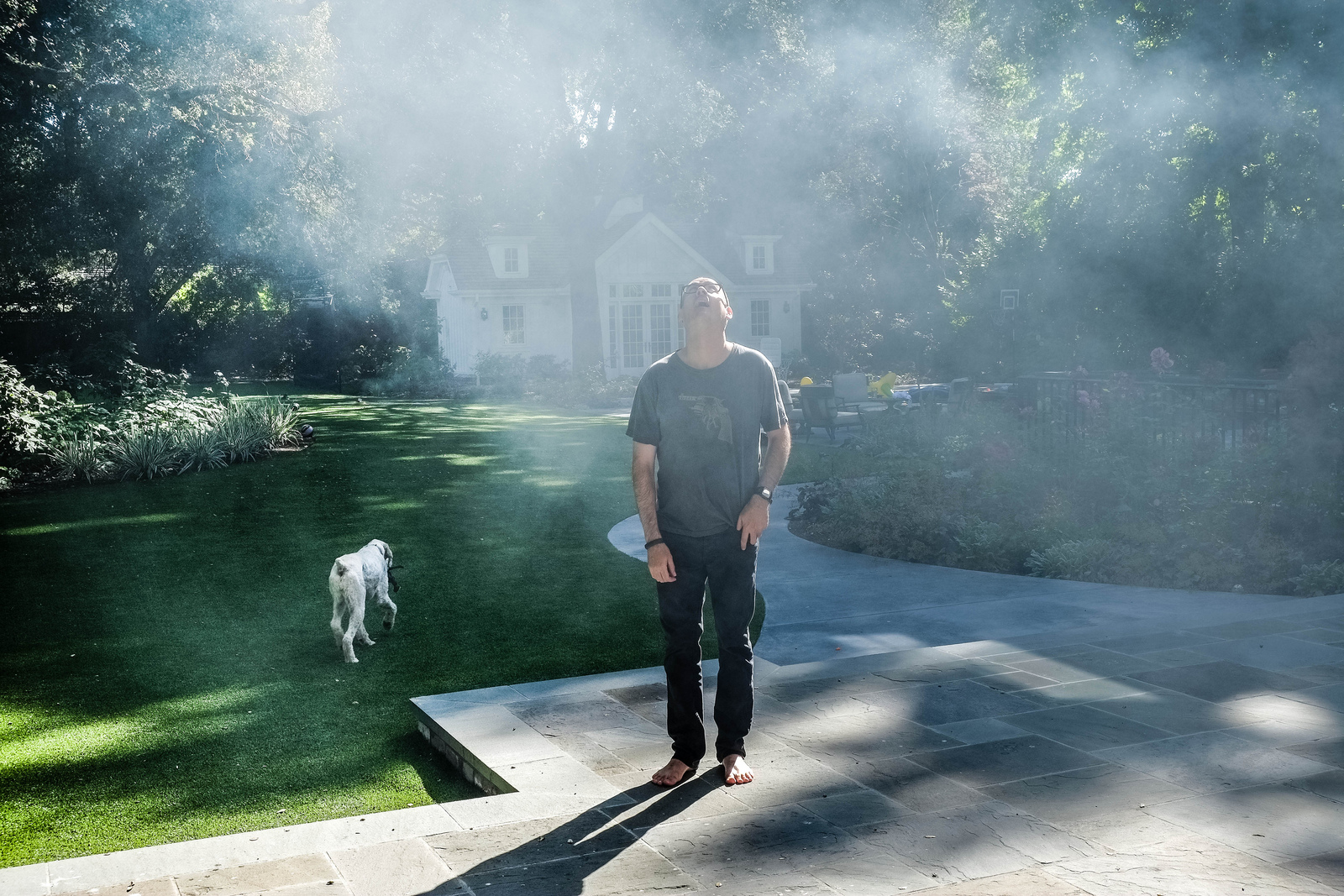
StreetShootr: If somebody just landed on planet Earth and has never heard of Jack Simon, how about introducing yourself and telling us a little about your street photography?
Jack Simon: My name is Jack Simon and I’m a 71 year old psychiatrist. I live in Northern California and have 2 grown children and 3 grandchildren who live in Southern California. I started street photography a little over 10 years ago. I was looking for a new hobby, I had been wind surfing for a couple of decades and I loved it, but it was getting a little tedious and it wasn’t something I wanted to spend any more time doing. So I started playing around with a camera and found I loved it. I really enjoyed the whole process and it evolved pretty quickly to street photography.
SS: How did you discover street photography? Was it something in your head that just said, “I want to take those kinds of pictures?” Or was it sort of a natural progression to shooting in the style that we now think of as street photography?
JS: It was an evolution for sure. When I got interested in photography I was trying to find what I would consider unusual photographs and I started taking pictures of unusual scenes or unusual people. But it slowly evolved to the idea that it takes a lot more to have an unusual photograph.
I think street photography just sort of blended into what I wanted to do because I wanted to be active. I sit down all day as a psychiatrist and I like wandering. I also like being in urban environments. So really, being out on the street and wandering for that photo was really appealing to me.
SS: What are your rules for street photography? Are your shots candid only?
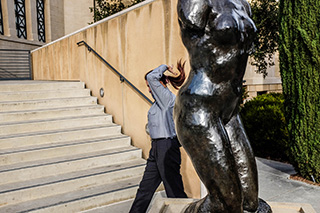
JS: I have my style but I don’t really care if anyone does it differently and still calls it street photography. I’m not a purist about it but I think it’s good for people to identify what their process is. Like if some people are setting it up a bit or talking to people before they shoot it’s nice to know that’s you’re looking at.
My photographs are basically candid and not planned. I never know when something is going to occur and that just tends to be my style. On the other hand, I don’t think I have the creative skill set to set up shots. Being spontaneous and not thinking about what I’m looking for works best for me.
SS: Are you more of a walk and watch or a wait and see kind of street photographer?
JS: I’m a walk and watch guy. I’m a little too restless to sit in one position for too long. I took that one workshop with Constantine Manos and he talked about being in a scene and waiting and watching what happens. I interpreted that in my mind as maybe he’s there for 30 seconds. And then I went out and watched what he was doing and he could be in a scene for an hour or more – just blending in and looking for his shot. I’m a little too restless for that. I like walking around so I can’t stand in one spot for too long.
But sometimes I will circle back. Especially if I know the lighting is beautiful in a particular scene, I’ll come back to it and take another look to see if anything else is happening. But most of the time I’m just going from point A to poing B which might be a great distance. I really like the variety of being in different areas of the city.
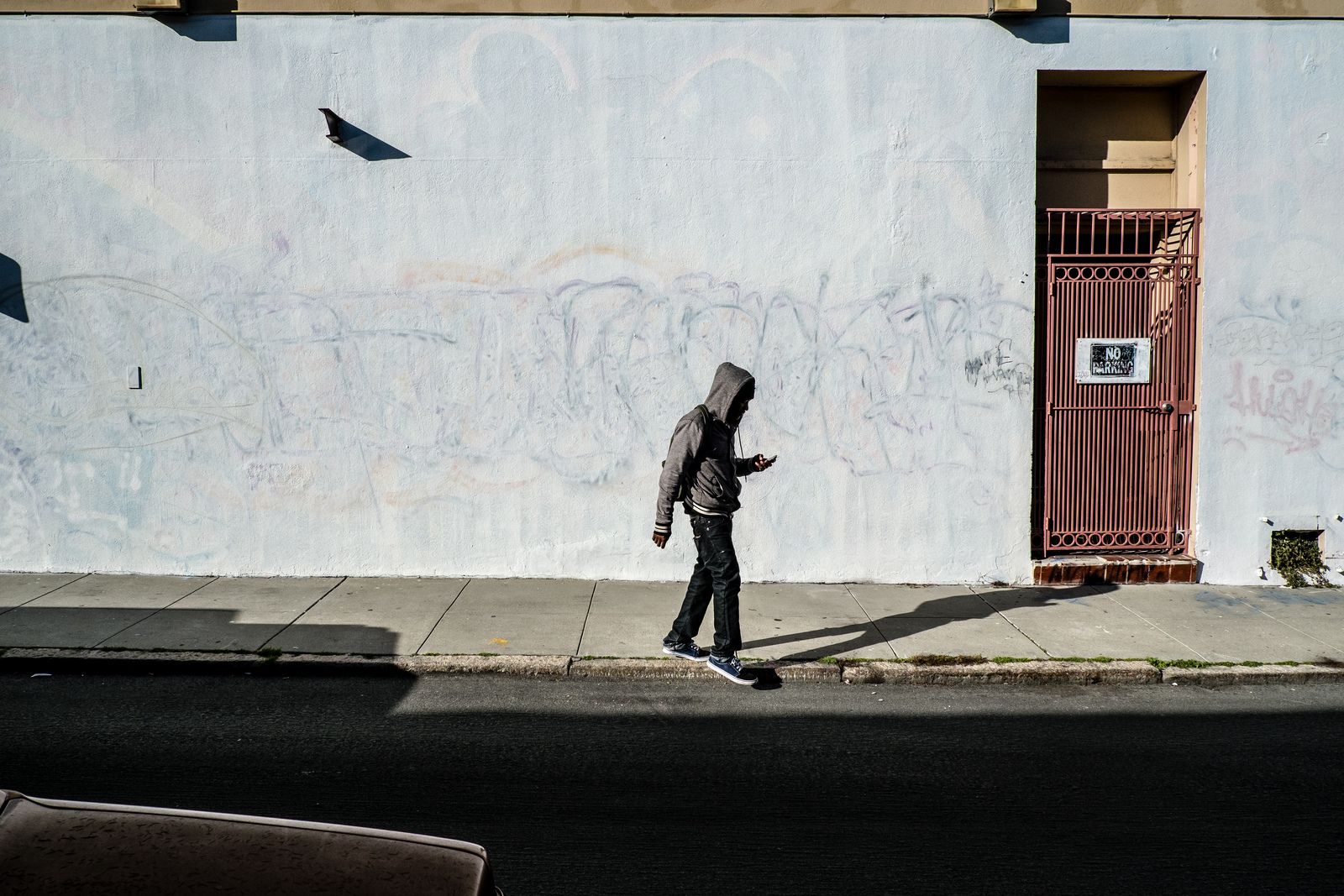
SS: You said you took a Costa Manos workshop, and I undersand you’re planning your own workshops. What would your advice be for someone who might be considering a workshop as opposed to just going out and shooting to learn? What’s the value of a workshop?
JS: I’m hoping to find that out! [Laughs]
I taught a brief workshop in Paris this last Winter. Burn My Eye had an exhibition in there and three of us did a several hour workshop. I really enjoyed that and I think people learned from it. But I think one reason I’ve held back a little bit from doing workshops is making sure that I could do something of value for others.
Now I get emails from people who are just reluctant to shoot on the street or anxious about that and I feel that’s an easy one. I mean I can take people around and just give them some ideas about shooting on the street and help them become more comfortable with it.
But my goal in running a workshop would be to really stimulate people. And to look at what they’re doing and how they’re doing it and see if you can help them grow in that direction.
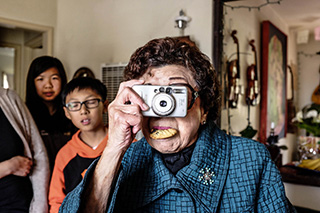
The Manos workshop was fabulous. One thing that has stayed with me is the idea to make a photograph that is uniquely my own. You might have a number of people around a given scene but how YOU take that photo really shows something about your style.
I think it’s really about looking at what people are doing and helping them develop their own style. But every person needs a different approach so you have to see what fits and works for them. I think that will be part of the challenge for me.
The other thing I remember from the Manos workshop that he went out with us and was shooting the entire time. At the end of the day everyone showed their photos and he showed his photos. They weren’t a lot of Manos photos in what he took that day. And he acknowledged that.
It’s hard work to find a good image. So when he went through maybe a couple of hundred that he had taken he found maybe one or two that he thought he’d sit on and maybe come back to. To me that was fabulous learning. Everyone gets disappointed too easily. It’s hard work.
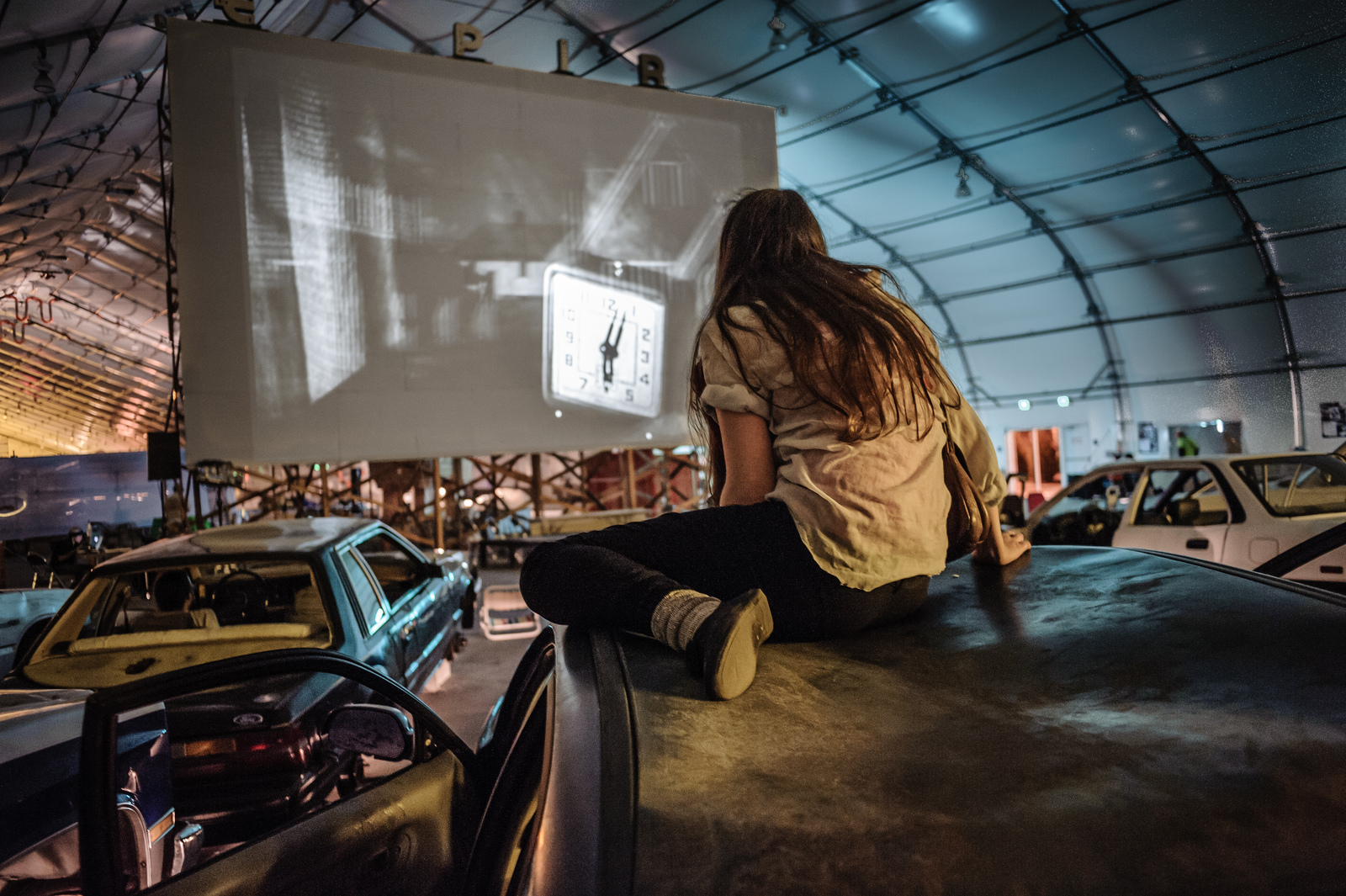
SS: Who are some of your influences in street photography?
JS: Some of the people that impact me are not street photographers. I love the work of Gregory Crewdson. He sets up these very elaborate scenes, they’re like stage sets. He even has a director of photography who might take the photo. There’s an excellent documentary about him called Brief Encounters that you can download and watch. He’s a fascinating guy.
For me he’s an influence but I like trying to find an image that has a little bit of that quality. Something dreamlike, where it’s hard to know what’s going on in that setting. Maybe even a a little surreal.
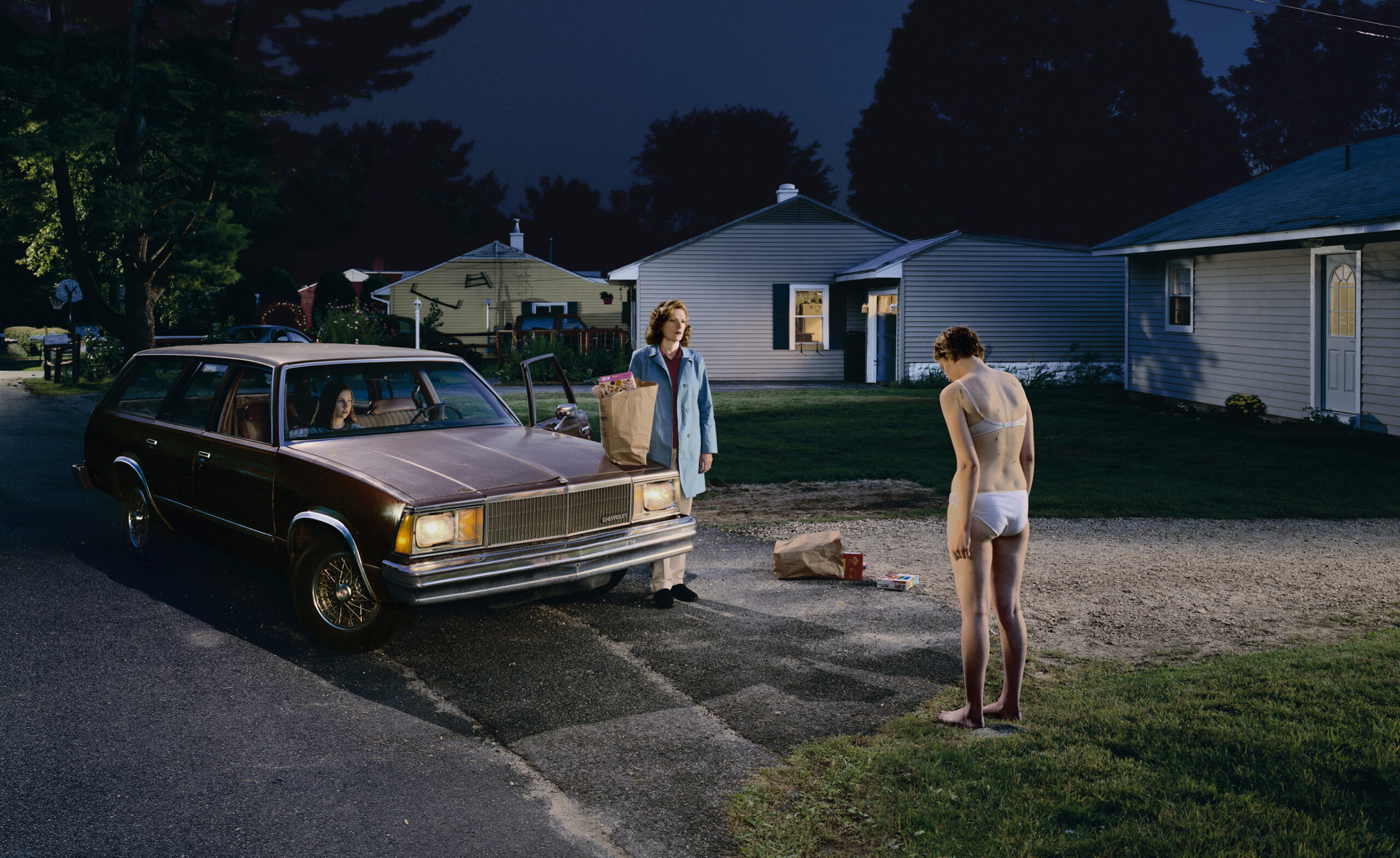
Really, for me, I’m not trying to document a particular scene on the street. Ideally I’d like to find an image that has a certain degree of mystery and that my viewer can come up with their own story. There’s a search for it but it’s not easy to find. Very hard.
I’d say good images are always hard to find. Period.
SS: Is there anything that’s off-limits for you as a street photographer? Any subjects you just won’t shoot?
JS: When you see someone on the street that has something that stands out that they may not be proud of. I mean they may be very overweight for example. I’ve come to realize is that if I’m going to take a photo of someone who may not be completely comfortable about knowing that they were photographed then I want to know that this was just a photo that had to be taken.
There’s another photographer, Lisette Model and the cover of her book is a big woman in a bathing suit. And it’s just beautiful and it was flattering. You can tell no fun is being made. I think I dislike it when you’re finding something and trying to add humor based on someone’s physical appearance.
But I have to say I’ve done all these same things myself so it’s hard to be too critical.
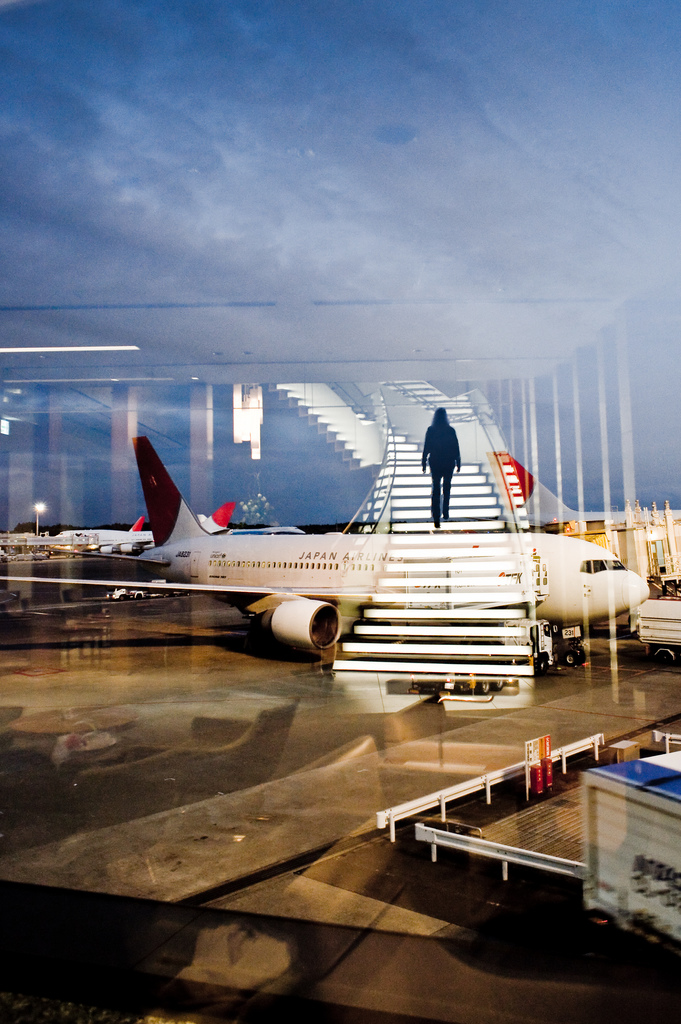
SS: What’s your favorite photograph that you’ve taken? Do you have one single image that stands out for you as being your favorite shot?
JS: I have a few actually. But I think one of my favorites is this stairway up into the skies above the airplane. And I like the shot and for me that’s a favorite but it’s also a lesson.
I was photographing in Japan for 2 weeks and there was plenty to photograph but we were sitting in the airport lounge at the end of the trip and this thing appears. And so to me it’s a favorite also as a lesson that you just never know when something is going to be there for you.
SS: How much time did you have between when you saw what was happening and when you were able to get into position to get the shot?
JS: That one, I had plenty of time. Most of the time I don’t. Most of the time things happen very quickly. But in that particular scene, I saw these images going past and I had some time. I didn’t spend a lot of time taking photos but I knew there was going to be a photograph there. So that’s really a favorite.
There’s another that involves a family member that I like just because it was fabulous time for me. It’s a man in a white bathrobe at night going out to garbage cans and there’s red lights in the background. He’s looking up.
And that one involved a story because my son’s wife had just had a baby, And my son kept his bathrobe on almost 24/7 for the week we were there. He was like Mr. Mom and he’d always have the baby with him – it was very sweet.
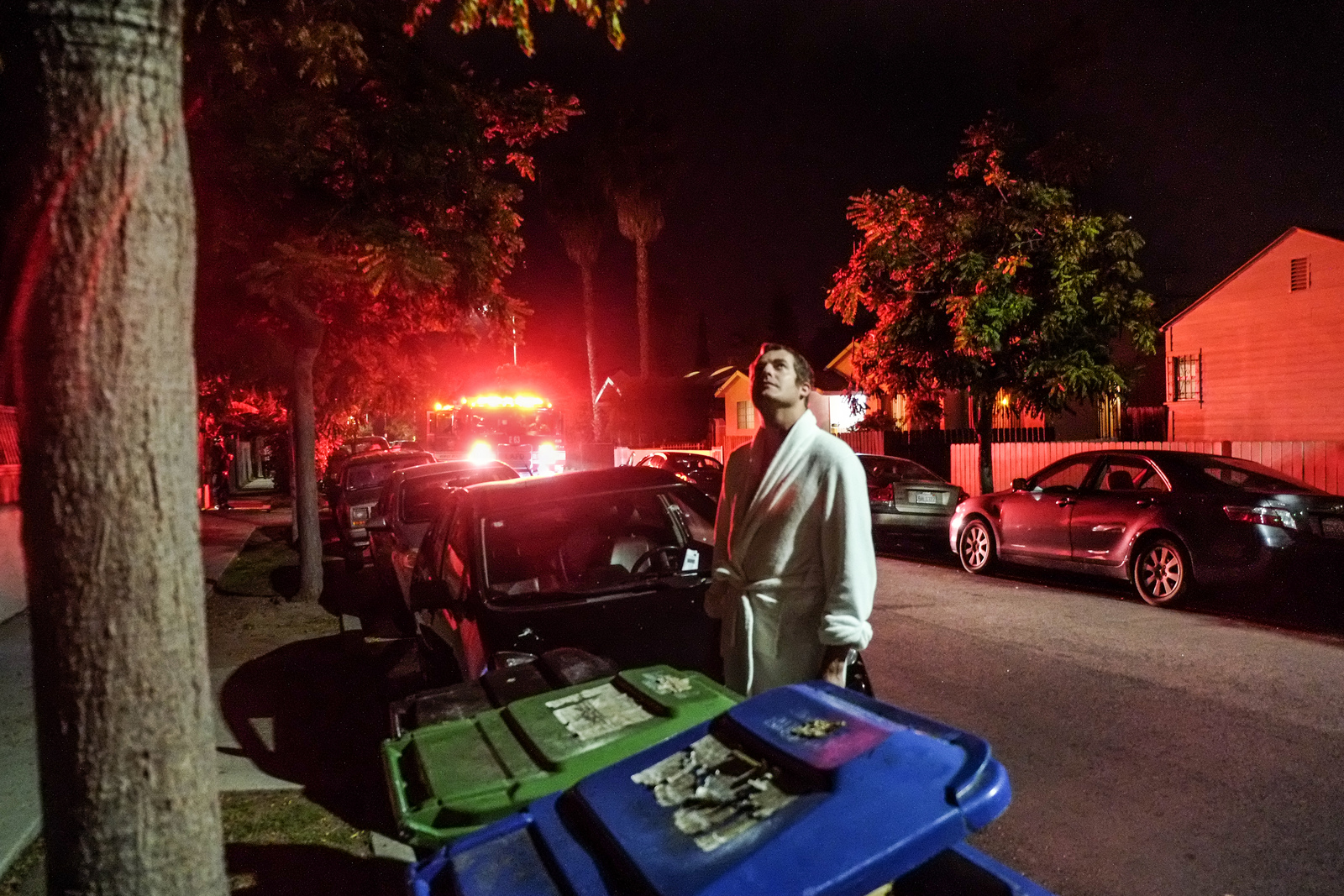
We had gone a few blocks away to visit our daughter and grandchildren and we were coming back to his house. He had brought out the garbage and something was going on on the street so the firetruck and ambulance were there and their lights were shining up in the tree. He looked up and I took the picture and that was it.
But I love that picture because of what was going on at the time, but I also just like the picture. That to me fits in to what I consider a more Gregory Crewdson type of photograph. I mean, Crewdson-like [laughs].
But I think there are a lot of images that I really like. For my birthday when I was 70 I put together a book of my 70 favorite images. That book was done through Blurb, but it’s available as a free download for anyone that has an iPad.
SS: Do you have any more books on the horizon?
JS: I think if I do another book, and I would like to, I won’t do it through Blurb. I like what Blurb does, but it’s embarassingly expensive to buy a Blurb book. In my case I’m selling the blurb book for $1 more than it costs to produce it but it’s still so expensive. I mean you could go to Amazon and buy an Alex Webb book for half the price of mine.
I’d like to put a book together at some point that I can sell for a price that’s reasonable. So that would mean getting it published in numbers.
SS: Film vs. digital is a hot topic on StreetShootr. Do you ever think about shooting film?
JS: I actually started with film but it was only vacation shots with a little point and shoot. Nothing serious. Shooting digital gave me immediate feedback so it really helped me establish compositions and understand photography.
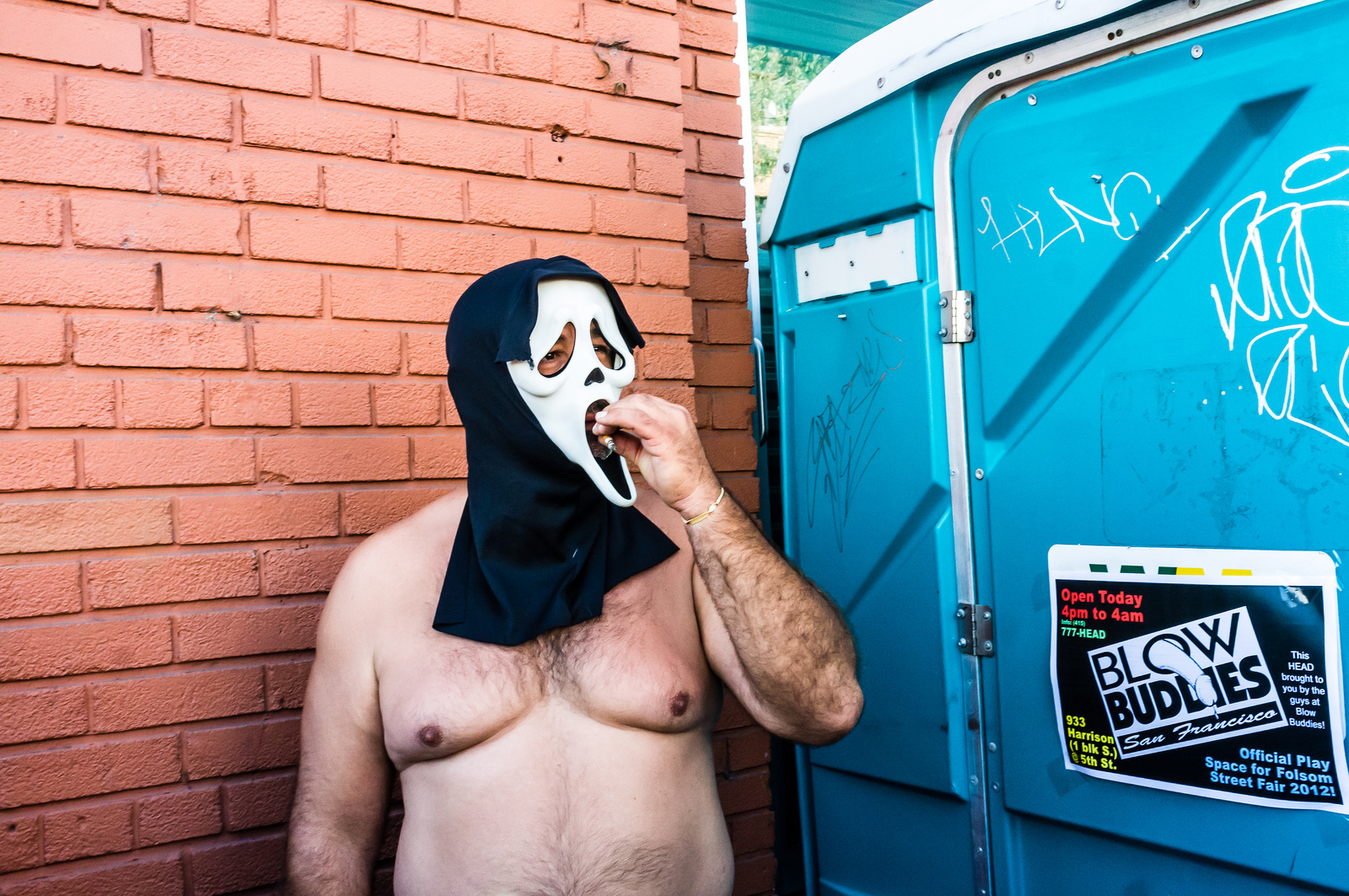
My son has given me a few little film cameras. Fun film cameras. And I might take one roll with them. But I really can’t wait to see what I’ve gotten for the day. I may not choose a photo from that right away, I may let it sit a little bit. But I always want to see right away. So I’m always amazed to see people say they have rolls of film they haven’t looked at. Or people who shoot digital but haven’t looked at their work. For me, I just can’t wait to see what the pictures look like.
My son is actually a filmmaker and a photographer and even though he shoots digital he says that he sees a difference between digital and film and he really loves look of film. So he was showing me that and we were looking at some photos and I honestly couldn’t see the difference.
I mean, if something is badly processed in digital I get it. I see that. But I think if it’s processed well I’m not sure I see the difference.
SS: I think digital doesn’t fail as gracefully as film fails. I have a soft spot for film but digital photography is the reality now. For me, it’s more about the image than the process.
JS: I saw the article you did on switching back to digital. I’m in a group on Facebook and someone quoted that one section with Matt Stuart and myself.
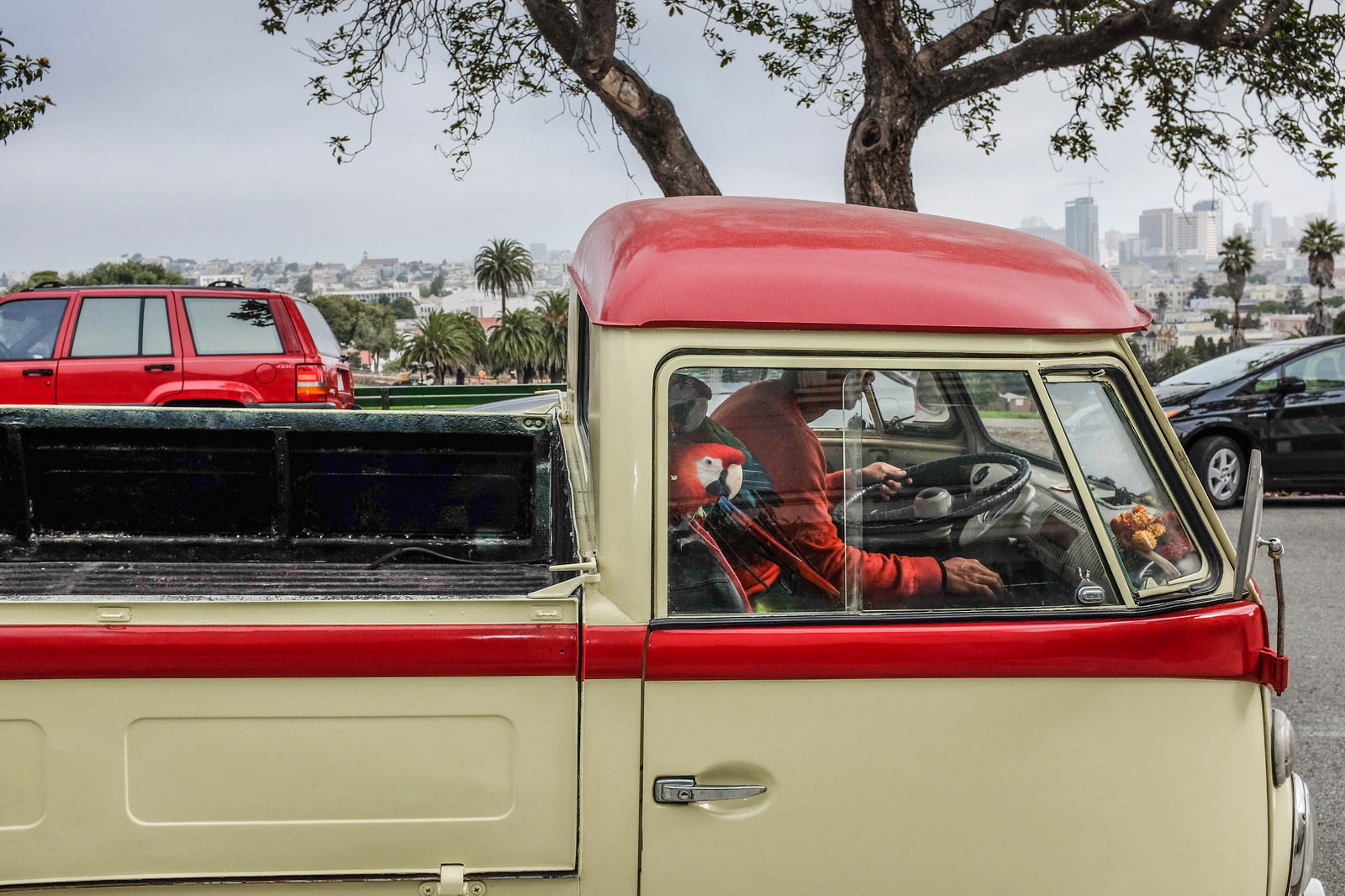
SS: For Every Matt Stuart There’s A Jack Simon!
JS: I don’t mind being in any paragraph with Matt Stuart, he’s one of my heroes. But I did write some funny comment on the Facebook group. I don’t remember exactly what it was but something like, “Maybe if Matt was shooting digital he’d be a better photographer.” [Laughs]
But I can see why people enjoy shooting film. Maybe they need to slow down a little bit and take fewer photographs and focus a little bit more on the process. Maybe for them it would be better to shoot film but for me I just don’t have the patience.
And even though I shoot digital I don’t really take that many photographs.
SS: You’re known for shooting with the Fuji X100. Did you start with the original X100 or did you start with the X100S?
JS: I started with the original X100.
SS: Oh, you suffered through the original X100?
JS: Ya. But I liked it. Sometimes, I’m just lucky and I’ll get a better photograph because the camera has a delay. So the original X100 worked out okay. The firmware updates did improve it immensely. But I’ve had all 3 iterations of the X100 so far.
SS: What’s your workflow with the X100? Are you a manual focus guy? Auto focus?
JS: I’m mostly auto focus. I’ve been trying to switch over to manual focus lately. Or a little bit more zone focus. The X100 makes it easy – you can press one little button when in manual and that sets the focus at that point. I’ve been playing around with that a little bit but I find autofocus works fine for me so I’m comfortable with that.
SS: How do you like the X100T? Is there one thing that stands out on the T that the X100S didn’t have?
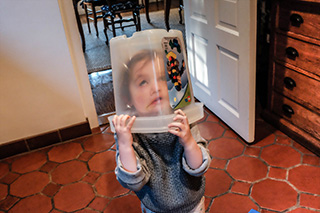
JS: I think everything just works a little bit better on the X100T. I think the autofocus is faster, and you can program each of the buttons on the back to do whatever you want. It also has that small electronic frame while you’re shooting optically. I leave that on when I’m shooting with the optical viewfinder but a lot of times I just use the EVF. I go back and forth.
If i’m in a scene where I can take advantage of the movement going into the frame then I’ll use the optical. But so much of my photography is really quick. It happens and it’s gone and I’m not really staying there. So the electronic viewfinder works for me quite well.
I think the X100T is brilliant, it’s a fabulous camera and everything is just a bit better. But the S was good too. And the original X100 had a great looking sensor even with all its little problems. I had a lot less trouble with images from that sensor in Lightroom too.
SS: What’s your post processing workflow in Lightroom? Is there anything special you do or is everything pretty much out of camera?
JS: I’m sorry, that’s a trade secret. I can’t tell you that!
SS: Oh, really?! [Laughs]
JS: I’m kidding of course. You know, I tend to have a look that I like. But nothing specific. I’ll sometimes set auto exposure and see what it does. Sometimes I push the black a little bit because I just like the way that looks. I’ll play around with the image, in fact if I find an image that I really like I’ll play around with it a little more.
What I’ve done lately, which is a crazy kind of processing is if I find a photograph I really like and it’s still on my chip, I’ll let the camera process it again. I’d rather do it in Adobe Lightroom, it’s just easier for me to work there than through the camera but I think Adobe hasn’t mastered the X100 X-Trans sensor yet.
I just upgraded to Lightroom 6 because 5 wasn’t recognizing the raw files from the X100T. But honestly I haven’t learned to use any of the new features yet. For the most part, I”ll do a little bit of processing to eye and a little bit on exposure and occasionally if there’s too much brightness on one side I’ll burn it down a little bit. But nothing too much.
But I have to say the way my photos look is really important to me in addition to the subject. If the subject is good and it’s a lousy looking photograph, in my mind, it’s not appealing to me. My picutres have to look good as well as having interesting content.
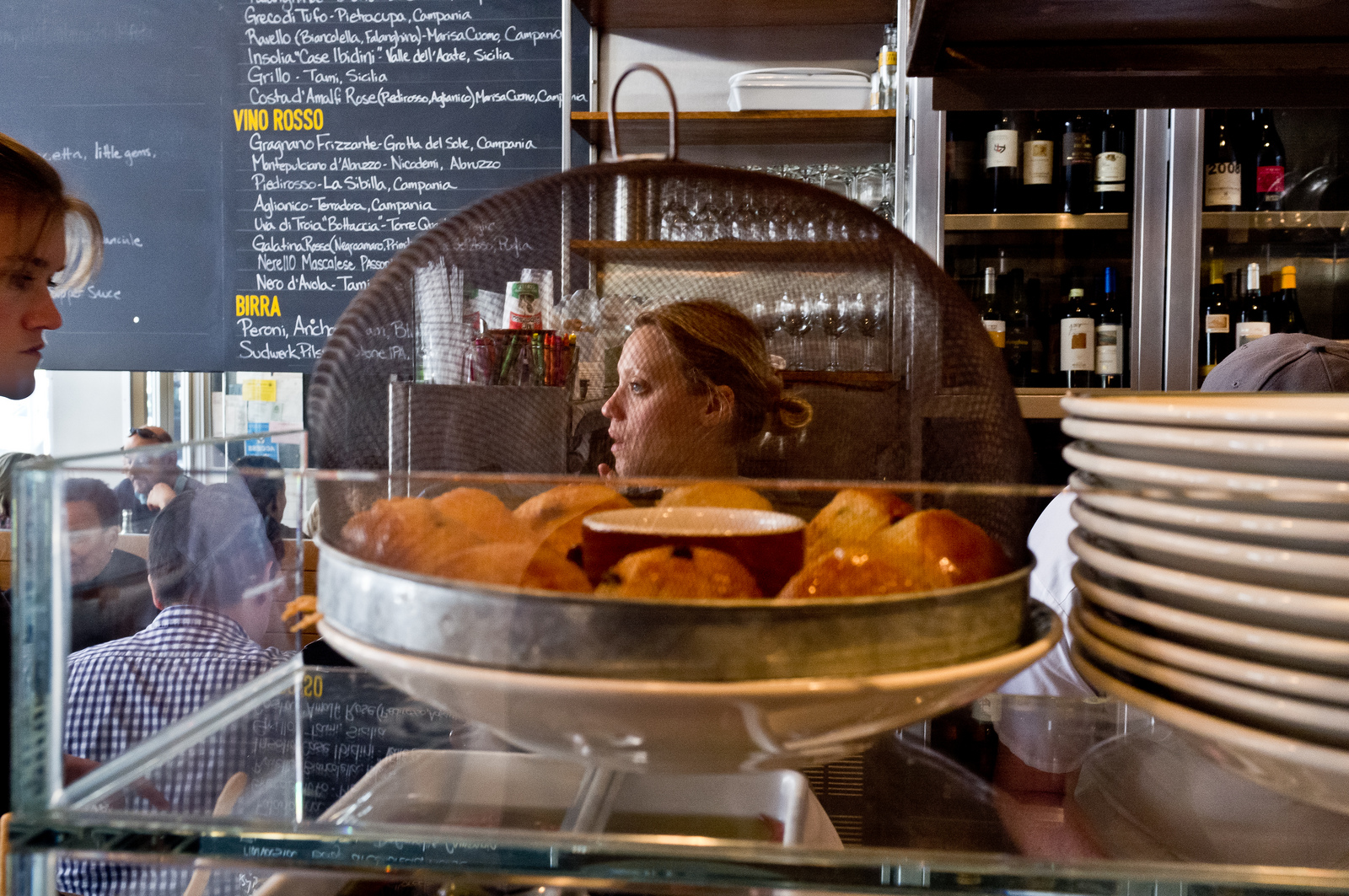
SS: What advice do you have for street photographers that might struggling creatively? You know, sometimes guys just run into that wall and they can’t get through it.
JS: Oh, we all hit that wall and I don’t know very many photographers who don’t get to the point and say, “Oh my work is all shit again! What am I doing?” And then suddenly something happens and you take a couple of photographs that you really like and they look good again. But how do you get to that point?
A couple of things I’ve recommended to people is try to have fun when you’re out shooting. I mean don’t have shooting be the only thing that’s going to interest you that day. Stop and have a good cup of coffee or a good meal. And I like going to museums and so if there’s a good show on I’ll look forward to that. I think it’s important to just try and enjoy your day and try not to take it so seriously. I mean most of us are doing this to enjoy ourselves and to have something that’s rewarding
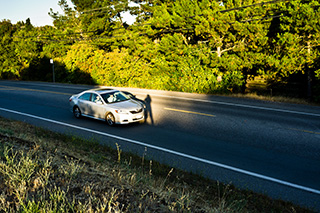
I think it’s important to recognize that it happens to everyone. Some people will try a different technique. Maybe shoot black and white for a while if they’ve been shooting color. Maybe get a new camera with the hope that it just interests them enough. They’re not going to take better pictures necessarily but it might spark their interest.
And it never hurts to look through a lot of photography. Look at people who inspire you. Look at things maybe aren’t what you want to shoot but that you really like and get it into your brain. I think that helps a lot.
It’s important to remember that street photography is really tough. Because we’re looking for something that’s not really there. Not that fashion photography or nature photography or anything is easy but it’s easier to say okay I’m going to take a beautiful picture of this landscape scene and I’m going to work on that. But a lot of times street photographer are waiting for something to come in front of our lens and you may not be finding it for a while. It just may not be happening. And so it’s just trying to tolerate that time and trying to enjoy the process.
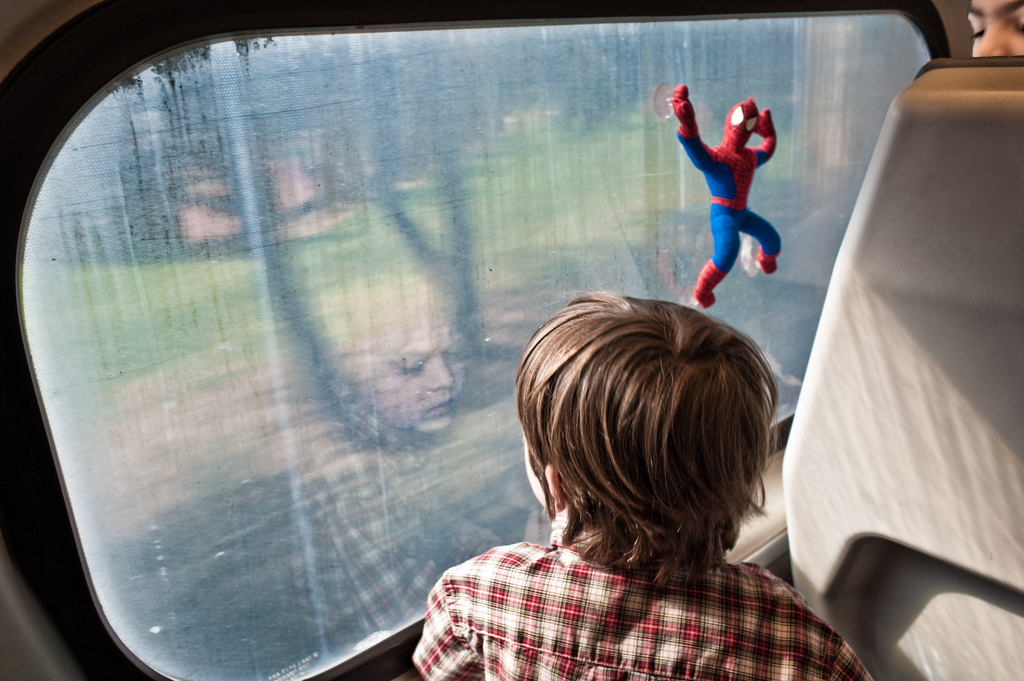
SS: I think as street photographers, our standards get raised with each good photograph that we take. So that we have to constantly be better than what you just did. The more you take the harder it becomes to live up to your own expectations.
JS: I think it’s very true. If you succeed then you expect more. But I think the other part is not expectation that you have to achieve something great but the desire to look for something a little bit different and that gets harder and harder. Where are you going to find something else that’s different from everything you’ve already shot?
The pictures might come more slowly but sometimes you might find a lot of picutres in a short time. I could spend a week and find 3 or 4 good photographs and that’s unusal but it does happen from time to time.
Just keep shooting, I guess!
SS: Jack this has been an absolute pleasure and I really hope we get the chance to do this face to face at some in time in the future.
JS: Let’s hope so!
My friend Eric Kim also posted a video of Jack Simon shooting on the street in San Francisco. Check it out:
Jack Simon On Flickr.
Jack Simon On BurnMyEye.
JackSimonPhotography.com.
Seventy by Jack Simon (Free Download).
All images © Jack Simon unless otherwise stated.
What’s your take on Jack Simon’s interview? A candid look behind the camera of one of the best street photographers working today? Or did the conversation leave you feeling a little flat? Post your ideas in the comments below and keep the conversation going!
